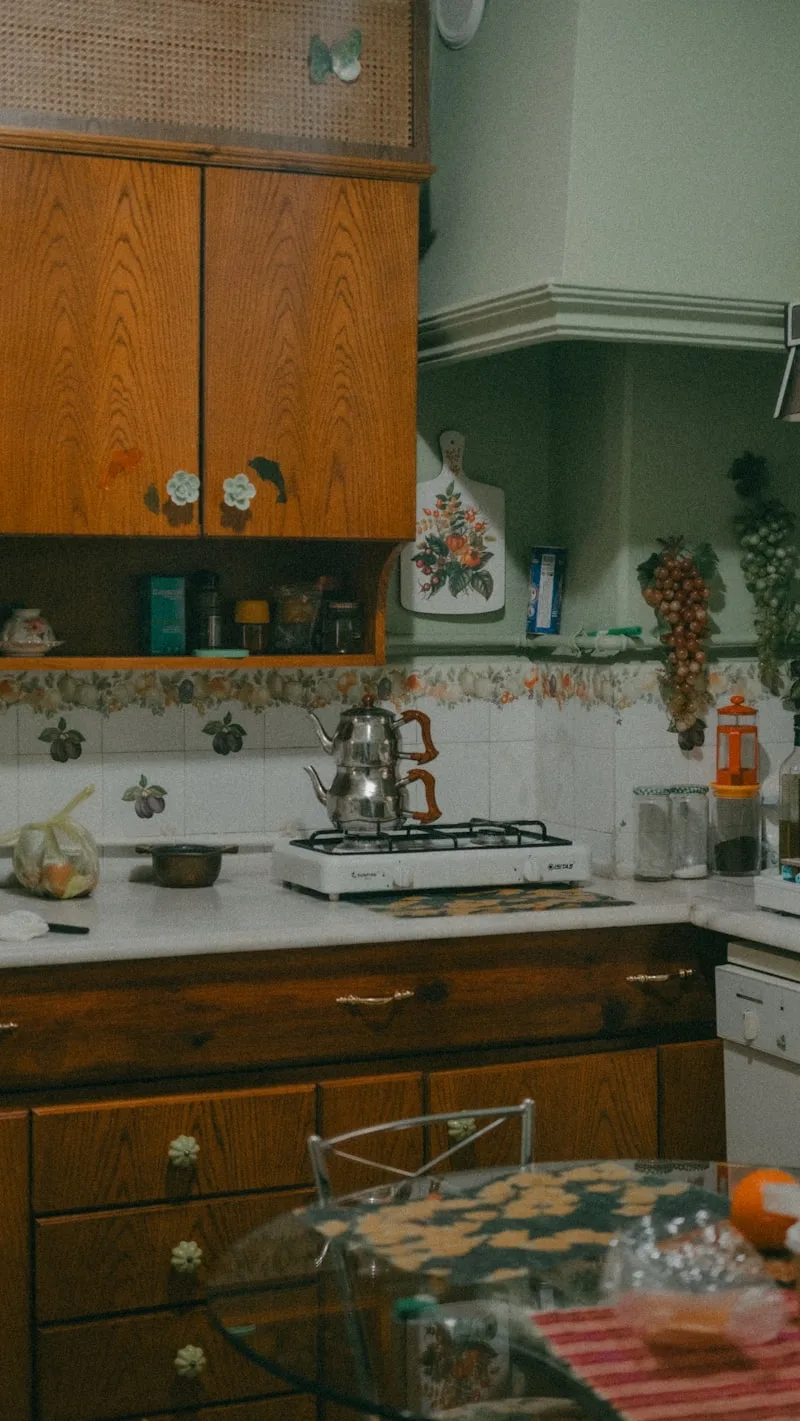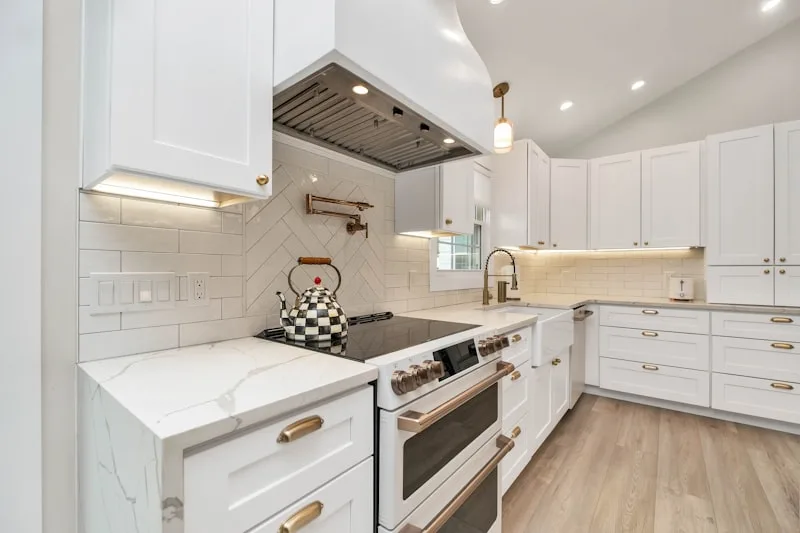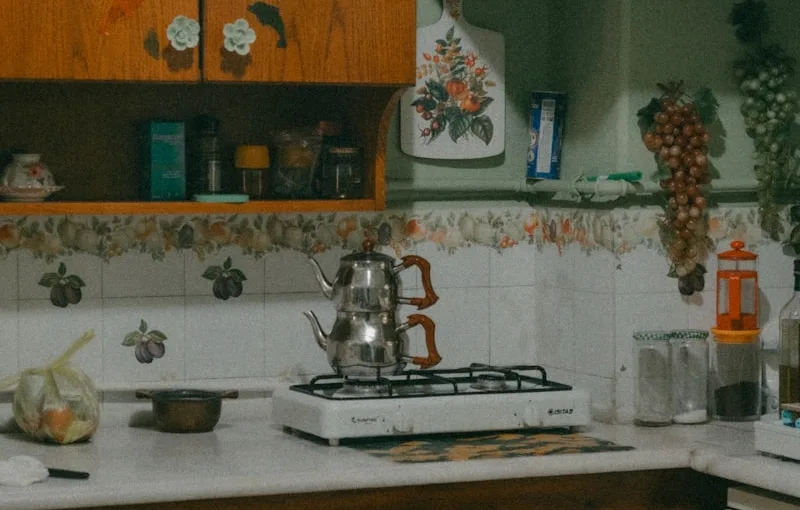Denatured alcohol is like that friend who’s great at cleaning up but can sometimes be a bit too intense. It’s a powerful solvent, which means it can cut through grease and grime like a hot knife through butter. However, when it comes to your kitchen cabinets, you need to tread carefully. Think of your cabinets as a delicate painting; one wrong move, and you could ruin the masterpiece.
If your cabinets are made of wood and finished with a lacquer or varnish, denatured alcohol can be a double-edged sword. On one hand, it can help remove sticky residues and old finishes. On the other hand, it can strip away that protective layer, leaving your cabinets vulnerable to scratches and stains. Imagine using a sledgehammer to hang a picture—sure, it’ll get the job done, but at what cost?
For painted cabinets, denatured alcohol can be a bit of a wild card. It might lift the paint right off, especially if it’s not a high-quality finish. So, before you go all-in, it’s wise to test a small, inconspicuous area first. Think of it as a dress rehearsal before the big show.
In short, while denatured alcohol can be a handy tool in your cleaning arsenal, it’s essential to use it with caution. Your kitchen cabinets deserve a gentle touch, so always consider the finish before reaching for that bottle.
Denatured Alcohol Dilemma: Is Your Kitchen Cabinet Finish at Risk?
Denatured alcohol is like that friend who’s great at parties but can be a bit unpredictable. It’s fantastic for removing grime and grease, but it can also strip away the finish on your cabinets faster than you can say “oops!” Imagine using a powerful solvent that’s meant to clean, only to find your cabinets looking dull and lifeless afterward. Yikes!

So, what’s the deal? Denatured alcohol is essentially ethanol with a twist—it’s been mixed with additives to make it undrinkable. This makes it a go-to for many DIY enthusiasts and professional cleaners alike. However, those same properties that make it effective can also be its downfall. If your cabinets are finished with a lacquer or shellac, denatured alcohol can dissolve that finish, leaving you with a mess instead of a sparkling clean surface.
Now, you might be wondering, “What should I use instead?” Well, think of alternatives like mild soap and water or specialized wood cleaners that are gentle yet effective. It’s like choosing a soft hug over a bear hug—both are nice, but one is definitely safer for your cabinets!
So, before you reach for that bottle of denatured alcohol, take a moment to consider the potential risks. Your kitchen cabinets deserve the best, and a little caution can go a long way in preserving their beauty.
The Truth About Denatured Alcohol: Friend or Foe to Your Kitchen Cabinets?
Denatured alcohol is essentially ethanol that’s been mixed with additives to make it undrinkable. Think of it as the rebellious cousin of regular alcohol—still useful, but with a few quirks. It’s a powerful solvent, which means it can cut through grease and grime like a hot knife through butter. If your cabinets are looking a bit worse for wear, a little denatured alcohol can work wonders, helping to lift stubborn stains and restore that fresh look.
However, here’s where the plot thickens. While it’s great for cleaning, denatured alcohol can also be a bit harsh. If your cabinets are made of delicate wood or have a special finish, using it might be like bringing a sledgehammer to a nail fight. It can strip away protective coatings, leaving your cabinets vulnerable to damage. So, before you go all-in with this cleaning powerhouse, it’s crucial to test it on a small, inconspicuous area first.
And let’s not forget about safety. Denatured alcohol is flammable and can emit strong fumes. It’s like that friend who’s always the life of the party but can get a little too wild—fun in moderation, but you need to keep an eye on things. Make sure your kitchen is well-ventilated and consider wearing gloves to protect your skin.
So, is denatured alcohol a friend or foe? It really depends on how you use it. With the right precautions, it can be a valuable ally in your cleaning arsenal, but misuse could lead to more harm than good.
Protecting Your Investment: How Denatured Alcohol Affects Kitchen Cabinet Finishes
Imagine your kitchen cabinets as a beautiful painting. You wouldn’t want to splash paint thinner on it, right? That’s exactly what denatured alcohol can do to certain finishes. It can strip away the protective layers, leaving your cabinets vulnerable to scratches, stains, and even water damage. If your cabinets are stained or lacquered, using denatured alcohol can dull their shine and ruin that sleek look you love.
Now, you might be wondering, “How do I clean my cabinets without risking damage?” Great question! Instead of reaching for that bottle of denatured alcohol, consider using a gentle soap and water solution. It’s like giving your cabinets a spa day—refreshing without the harsh side effects. If you really need something stronger, look for products specifically designed for wood finishes. They’re like the gentle giants of the cleaning world, tough on dirt but kind to your cabinets.
So, the next time you’re tackling that kitchen mess, think twice before grabbing the denatured alcohol. Your cabinets will thank you, and you’ll keep that stunning finish intact for years to come. After all, protecting your investment is key to maintaining the heart of your home.
Cleaning Caution: Can Denatured Alcohol Ruin Your Kitchen Cabinets?
Denatured alcohol is like that overzealous friend who means well but can sometimes cause more harm than good. Sure, it’s great for cutting through grease and grime, but it can also strip away the finish on your cabinets faster than you can say “oops!” Imagine your cabinets as a beautiful painting; using denatured alcohol is like splashing water on it—suddenly, that masterpiece is a blurry mess.
If your cabinets are made of wood, you need to be especially cautious. The alcohol can seep into the wood, causing it to dry out and potentially warp. Think of it as giving your cabinets a sunburn; they might look fine at first, but over time, they’ll start to crack and peel. And if your cabinets are painted or stained, denatured alcohol can lift that finish, leaving you with unsightly patches that scream for a makeover.
So, what’s the alternative? Opt for a gentle soap and water solution or a specially formulated wood cleaner. These options are like a cozy blanket for your cabinets—safe, effective, and nurturing. They’ll clean without the risk of damage, keeping your kitchen looking fresh and fabulous.
In the end, while denatured alcohol might seem like a quick fix, it’s essential to weigh the risks. Your kitchen cabinets deserve the best care, so choose wisely!
Denatured Alcohol and Kitchen Cabinets: What Every Homeowner Needs to Know
First off, denatured alcohol is basically ethanol with a twist—it’s been mixed with additives to make it undrinkable. This makes it a powerful solvent, perfect for tackling tough grime and sticky residues on your cabinets. Imagine it as the superhero of your cleaning supplies, swooping in to save the day when your cabinets are looking a little worse for wear.
Now, you might be wondering, “Is it safe?” Well, when used correctly, denatured alcohol can be a game-changer. Just think of it as a double-edged sword; it can cut through grease and grime, but you need to wield it wisely. Always ensure your kitchen is well-ventilated, and wear gloves to protect your skin. It’s like putting on armor before heading into battle!
One of the best things about denatured alcohol is its versatility. Whether you’re dealing with painted, stained, or varnished cabinets, it can help restore their shine without damaging the finish. Just a little dab on a soft cloth can work wonders. It’s like giving your cabinets a refreshing spa day!
But hold on—before you go all in, test it on a small, inconspicuous area first. Think of it as a dress rehearsal before the big show. This way, you can ensure that your cabinets will thank you for the treatment, rather than throwing a tantrum. So, if you’re ready to give your kitchen cabinets the TLC they deserve, denatured alcohol might just be your new best friend!
The Hidden Dangers of Denatured Alcohol: Safeguarding Your Kitchen Cabinets
Denatured alcohol is essentially ethanol mixed with additives to make it undrinkable. While it’s effective for cleaning, those additives can be a real cause for concern. Imagine using a product that not only cleans but also releases harmful fumes into your kitchen. Breathing in those vapors can irritate your lungs and eyes, making your cleaning spree feel more like a toxic adventure.
And let’s not forget about the risk of flammability. Denatured alcohol is highly flammable, which means that a simple spark from your stove could turn your cleaning session into a fiery disaster. Picture this: you’re scrubbing away, and suddenly, a flame ignites. Yikes! That’s not the kind of excitement you want in your kitchen.
Moreover, if you have kids or pets, the dangers multiply. A curious child or a playful pet could easily knock over that bottle, leading to spills that can be hazardous. It’s like leaving a loaded gun on the table—definitely not a smart move!
Expert Insights: Will Denatured Alcohol Leave Your Cabinets Looking Dull?

First off, denatured alcohol is a powerful solvent. It’s like that friend who can tackle any mess at a party—quick and effective! It cuts through grease, grime, and sticky residues like a hot knife through butter. But here’s the kicker: if you’re not careful, it can also strip away the finish on your cabinets, leaving them looking less than stellar. Imagine polishing a beautiful car only to find out you’ve accidentally taken off the shine. Yikes!
Now, don’t get me wrong; denatured alcohol can be a fantastic tool when used correctly. Think of it as a double-edged sword. If you’re dealing with tough stains or sticky spots, it can work wonders. Just remember to test it on a small, inconspicuous area first. It’s like trying on a pair of shoes before you buy them—better safe than sorry!
Another thing to consider is the type of finish on your cabinets. If they’re painted or have a lacquer finish, denatured alcohol might not be your best friend. It could leave them looking dull and lifeless, much like a wilted flower. Instead, opt for a gentler cleaner that will maintain that fresh, vibrant look.
So, while denatured alcohol can be a cleaning powerhouse, it’s essential to wield it wisely. Treat your cabinets with care, and they’ll reward you with a gleaming finish that makes your kitchen the envy of the neighborhood!
Frequently Asked Questions
Can I Use Denatured Alcohol for Cleaning Kitchen Cabinets?
Denatured alcohol can effectively clean kitchen cabinets by removing grease, grime, and stains. However, it is important to test it on a small, inconspicuous area first to ensure it does not damage the finish. Use it in a well-ventilated area and follow up with a damp cloth to remove any residue.
What Alternatives to Denatured Alcohol Are Safe for Cabinets?
For cleaning cabinets, consider using vinegar, which effectively removes grime without harsh chemicals. Mild dish soap mixed with water is another safe option, providing gentle cleaning without damaging surfaces. Additionally, rubbing alcohol can be a suitable alternative, as it evaporates quickly and leaves no residue. Always test any solution on a small, inconspicuous area first to ensure compatibility with your cabinet material.
Does Denatured Alcohol Harm Kitchen Cabinet Finishes?
Denatured alcohol can damage kitchen cabinet finishes, particularly those that are water-based or lacquered. It may strip away protective coatings, leading to discoloration or dullness. Always test in an inconspicuous area before use and consider alternative cleaning solutions to preserve the finish.
What Are the Effects of Denatured Alcohol on Wood Cabinets?
Denatured alcohol can effectively clean wood cabinets by removing dirt and grime. However, it may also strip away the finish, leading to discoloration or damage if not used carefully. Always test on a small, inconspicuous area first and consider using a wood-safe cleaner for maintenance.
How to Safely Use Denatured Alcohol on Cabinet Surfaces?
To safely use denatured alcohol on cabinet surfaces, first ensure the area is well-ventilated. Test a small, inconspicuous spot to check for any adverse reactions. Use a soft cloth to apply the alcohol gently, avoiding excessive saturation. Wipe in the direction of the grain to prevent damage. After cleaning, rinse the surface with water and dry thoroughly to remove any residue.
